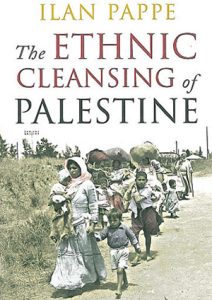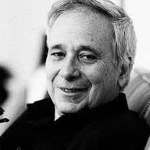The Ethnic Cleansing of Palestine

Author: Ilan Pappé
Publisher: Oneworld Publications
Year of Publication: 2007
Print Length: 336 pages
Genre: Non-Fiction / Archaeology, Political Science
Area: Palestine/Israel, Middle East, The Levant
Topic: Palestinian/Falastini, Ethnic Cleansing, History, Solidarity, Self-Determination, Politics & Power, Colonialism & Post-Colonialism, Imperialism, Zionism, Decolonization & Anti-Colonization, Independence & Liberation, Peace, Refugees & Forced Migration, Social Justice, Trauma, Vulnerability
Between 1947 and 1949, over 400 Palestinian villages were deliberately destroyed, civilians were massacred and around a million men, women, and children were expelled from their homes at gunpoint.
Denied for almost six decades, had it happened today it could only have been called ‘ethnic cleansing’. Decisively debunking the myth that the Palestinian population left of their own accord in the course of this war, Ilan Pappé offers impressive archival evidence to demonstrate that, from its very inception, a central plank in Israel’s founding ideology was the forcible removal of the indigenous population. Indispensable for anyone interested in the current crisis in the Middle East.
Table of Contents
List of Illustrations, Maps and Tables
Acknowledgments
Preface
1. An ‘Alleged’ Ethnic Cleansing?
Definitions of Ethnic Cleansing / Ethnic Cleansing as a Crime / Reconstructing an Ethnic Cleansing
2. The Drive for an Exclusively Jewish State
Zionism’s Ideological Motivation / Military Preparations / The Village Files / Facing the British: 1945-1947 / David Ben-Gurion: The Architect
3. Partition and Destruction: UN Resolution 181 and its Impact
Palestine’s Population / The UN’s Partition Plan / The Arab and Palestinian Positions / The Jewish Reaction / The Consultancy Begins its Work
4. Finalising A Master Plan
The Methodology of Cleansing / The Changing Mood in the Consultancy: From Retaliation to Intimidation / December 1947: Early Actions / January 1948: Farewell to Retaliation / The Long Seminar: 31 December – 2 January / February 1948: Shock and Awe / March: Putting the Finishing Touches to the Blueprint
5. The Blueprint for Ethnic Cleansing: Plan Dalet
Operation Nachshon: The First Plan Dalet Operation / The Urbicide of Palestine / The Cleansing Continues / Succumbing to a Superior Power / Arab Reactions / Towards the ‘Real War’
6. The Phony War and the Real War over Palestine: May 1948
Days of Tihur / The Massacre at Tantura / The Brigades’ Trail of Blood / Campaigns of Revenge
7. The Escalation of the Cleansing Operations: June-September 1948
The First Truce / Operation Palm Tree / In Between Truces / The Truce that Wasn’t
8. Completing the Job: October 1948—January 1949
Operation Hiram / Israel’s Anti-Repatriation Policy / A Mini Empire in the Making / Final Cleansing of the South and the East / The Massacre in Dawaymeh
9. Occupation and its Ugly Faces
Inhuman Imprisonment / Abuses Under Occupation / Dividing the Spoils / Desecration of Holy Sites / Entrenching the Occupation
10. The Memoricide of the Nakba
The Reinvention of Palestine / Virtual Colonialism and the JNF / The JNF Resort Parks in Israel
11. Nakba Denial and the ‘Peace Process’
First Attempts at Peace / The Exclusion of 1948 from the Peace Process / The Right of Return
12. Fortress Israel
The ‘Demographic Problem’
Epilogue
Endnotes
Chronology
Maps and Tables
Bibliography
Index

Ilan Pappé is an expatriate Israeli political scientist and historian. He has been teaching in several institutes such as Haifa University, Israel and University of Exeter, England. He founded and directed the Academic Institute for Peace in Givat Haviva, Israel between 1992 to 2000 and was the Chair of the Emil Tuma Institute for Palestine Studies in Haifa between 2000 and 2006. His research focuses on the modern Middle East and in particular the history of Israel and Palestine.
Source: https://arabislamicstudies.exeter.ac.uk/staff/pappe/
More from Ilan Pappé in this library, click here.
